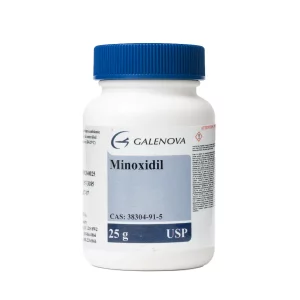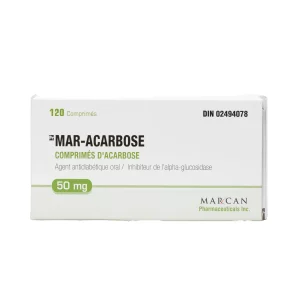Your cart is empty.
Your cart is empty.
Acarbose is a medication often used to support healthy blood sugar levels in individuals with type 2 diabetes. By slowing how the body digests certain carbohydrates, it helps prevent sharp increases in blood sugar after eating. Many people who have incorporated this medication into their daily health plans have experienced real-life improvement in their blood sugar management. Acarbose success story examples are becoming increasingly common.
One of the key points for those using Acarbose is understanding the appropriate Acarbose dosage, which must always be determined by a licensed professional. You can order Acarbose online from trusted sources, but it’s important to know exactly how this medication works before considering it as part of a glucose management strategy. This article walks you through how Acarbose works, what it targets in the body, and how it helps maintain steady sugar levels, especially after meals.
Acarbose is an oral medication classified as an alpha-glucosidase inhibitor. It is often used to help manage blood glucose levels in individuals with type 2 diabetes.
Unlike some other medications that stimulate insulin release, Acarbose slows down how quickly the body digests complex carbohydrates, foods like rice, bread, and potatoes. This results in a more gradual rise in blood sugar levels after meals.
Acarbose is most effective when paired with:
Doctors typically recommend taking it with the first bite of a carbohydrate-containing meal to ensure it’s active during digestion.

When you eat foods that contain carbohydrates, your body begins breaking them down almost immediately. As the food passes into the small intestine, enzymes known as alpha-glucosidases go to work. These enzymes specialize in converting complex carbohydrates (like those found in bread, pasta, and potatoes) into simple sugars, such as glucose. Once broken down, glucose is absorbed into the bloodstream, leading to a rise in blood sugar levels, especially after meals.
This rise is natural, but when it happens too fast or too often, it can strain your body’s ability to regulate sugar levels efficiently. Over time, repeated post-meal spikes in blood glucose can increase the risk of complications, especially for people with type 2 diabetes. This is why doctors often recommend therapies that help slow or moderate the digestive process—so that sugar is released into the bloodstream more gradually and predictably.
Acarbose works by inhibiting the activity of those alpha-glucosidase enzymes in the small intestine. That means it slows down or partially blocks the enzyme’s ability to break complex carbs into absorbable sugar. By interfering with this step, Acarbose prevents a large portion of carbohydrates from being rapidly turned into glucose. Instead of an immediate surge, glucose enters the bloodstream slowly, in smaller amounts over time.
You can think of Acarbose as a kind of “traffic slowdown” for sugar entering your system. Just as speed bumps reduce the flow of traffic on a busy road, Acarbose reduces the speed and volume of sugar absorption after a meal. The result is more stable blood sugar levels, fewer dramatic ups and downs, and better glycemic control throughout the day, especially helpful for those managing diabetes or looking to maintain long-term health.

Acarbose acts directly in the digestive tract, especially in the small intestine, which is where carbohydrates are broken down into sugar. The medication stays localized and does not enter the bloodstream in significant amounts.
The best time to take Acarbose is at the start of a carbohydrate-rich meal. That way, it begins working immediately when digestion starts.
It’s important to note that Acarbose targets post-meal sugar increases (known as postprandial glucose), not fasting blood sugar.
After a meal, especially one rich in carbohydrates, your body begins to break down food into glucose. This leads to a natural increase in blood sugar. While this process is normal, frequent or excessive sugar spikes, known as postprandial spikes, can stress the body over time. These sudden surges can impact energy levels, appetite regulation, and long-term metabolic balance.
Acarbose helps reduce the intensity of these sugar spikes by slowing down carbohydrate digestion in the small intestine. By interfering with the enzymes that normally break complex carbs into sugar, Acarbose allows glucose to enter the bloodstream more gradually. This creates a smoother, more stable sugar level curve after meals, helping users maintain better day-to-day balance and feel more energized throughout the day.
Beyond controlling day-to-day sugar levels, Acarbose plays a role in managing HbA1c levels, a clinical measure that reflects average blood glucose over several months. Lower HbA1c values are linked to fewer diabetes-related complications, including nerve damage, vision issues, and kidney problems. By consistently reducing post-meal spikes, Acarbose can contribute to improved long-term outcomes for people with type 2 diabetes.
This medication is especially helpful when used as part of a broader health strategy. When combined with regular exercise and mindful eating habits, Acarbose helps users better manage their metabolic health. It supports a steady and predictable blood sugar rhythm, which is critical not just for physical health, but also for emotional well-being and overall quality of life.
One of the things that is unique about Acarbose is that it actually does not stimulate insulin release. Instead of working like some other drugs that increase insulin levels, Acarbose works entirely within the digestive system. This makes it a useful option for individuals with reduced pancreatic function. It doesn’t add stress to the pancreas, which can be helpful for patients whose insulin-producing cells are already under strain.
Instead of basing its effect on how the body produces insulin, Acarbose works in a complementary way with other insulin-related treatments. By controlling the supply of sugar entering the blood, this makes it a very flexible mechanism when medical professionals tailor treatment plans. For individuals seeking better glucose control without added insulin stimulation, Acarbose serves as a valuable and efficient tool in long-term diabetes care.
Other common medications, like:
…work differently from Acarbose. Acarbose focuses on digestion, it slows down how carbs are absorbed, rather than changing how your body makes or uses insulin.
Licensed specialists often use Acarbose in combination with other oral medications to provide a personalized and more effective approach to managing type 2 diabetes. It works well alongside other drugs and healthy lifestyle choices.
Acarbose slows down the breakdown of complex carbohydrates by blocking digestive enzymes in the small intestine.
It should be taken with the first bite of meals that contain carbohydrates for optimal effect.
No. Acarbose does not stimulate insulin production. It helps manage blood sugar by slowing the absorption of carbs.
It works best with meals that contain complex carbohydrates, such as bread, pasta, rice, and starchy vegetables.
Acarbose starts working with the very first meal after you take it. It acts immediately in the digestive tract.
Yes. Acarbose can, and often is, used in combination with other oral diabetes medications. A trained specialist should be consulted to recommend the right combination based on individual needs.





Unlock savings on bundles and elevate your online experience today!